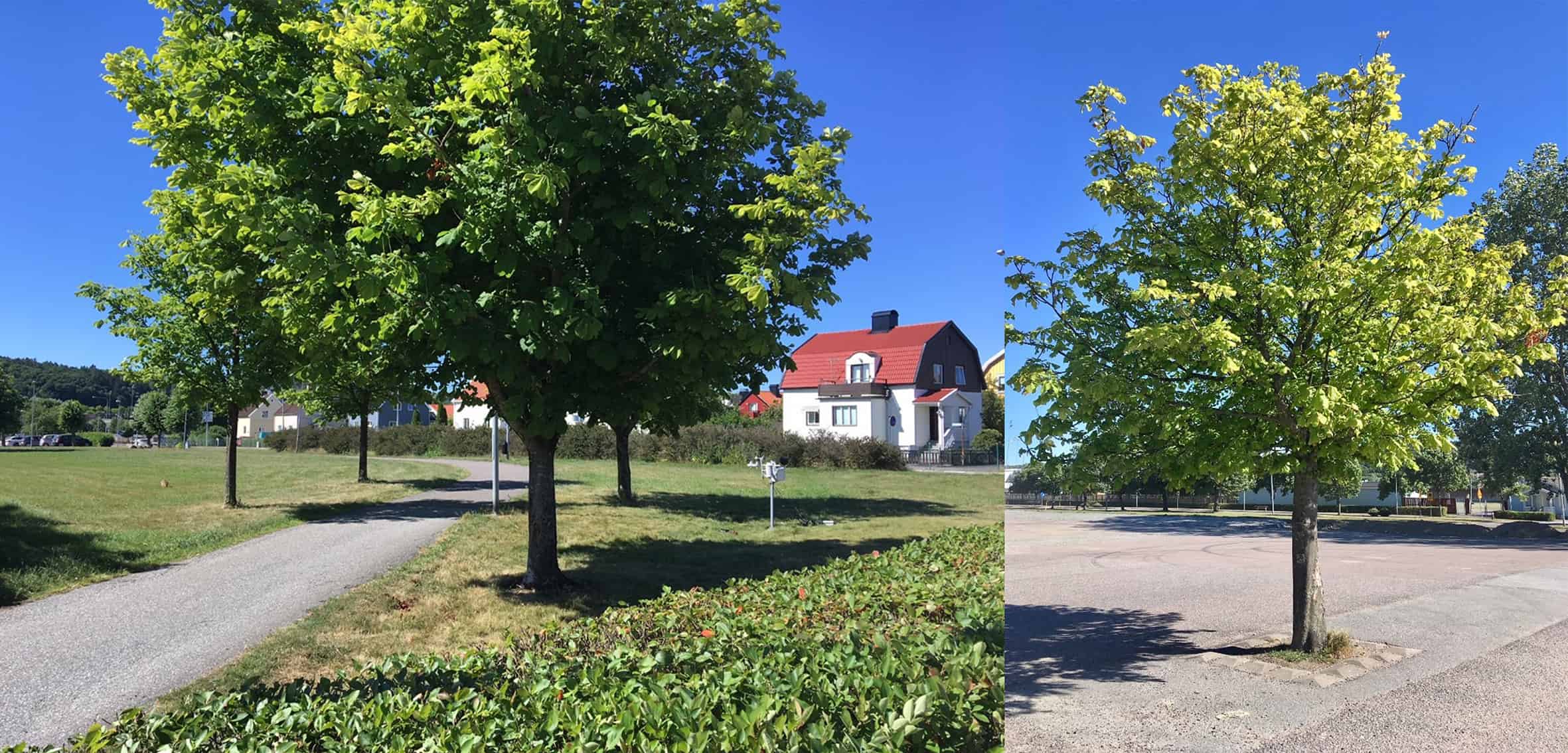It’s no secret that trees planted in urban areas can not only provide shade but also lower air temperature. However, for these ecosystem services to be optimal, you have to give trees the best conditions possible. Researchers discovered that excessive asphalt around trees diminishes their ecological benefits. They recommend replacing asphalt with grass to optimize these benefits.

The ecosystem services provided by urban trees are influenced by their canopy size and density and are limited when the trees grow poorly. One of the main stress factors that limit their growth in cities is surface paving. Paved surfaces limit the infiltration of rainwater into the soil, which in turn reduces water and nutrient uptake of trees.
However, studies focusing on the growth and physiological performance of street trees in relation to the degree of paving are limited. Seeking to address this, a team at the University of Gothenburg studied the impact of surface cover around the trunk on pin oak, horse chestnut and common lime trees at several sites in Gothenburg and Mölndal.
Quercus palustris (pin oak) is native to wetlands in eastern and central North America. In recent years, it’s been planted in Gothenburg. Aesculus hippocastanum (horse chestnut) is native to the Balkan Peninsula, but it’s now widely distributed in central Europe and North America. Tilia × europaea (common lime) is native to most of Europe.
Building on this background, the researchers explored how different surface materials affect these tree species.
Trees versus asphalt
The study was based on various parameters, such as crown density, tree growth and the amount of water released by the leaves (through a process called transpiration). All of these factors determine the tree’s impact on the microclimate. The density of the crown and the size of the tree determine the shading effect, while transpiration acts as air conditioning, cooling the air.
“Our research shows that an important factor is how much of the area around the tree is paved,” Janina Konarska, study lead author, said in a news release. “The air above the asphalt surface will be warmer than the air above grass or soil. A hardened surface also prevents rainwater from reaching the roots, which impacts the growth of the tree.”
The researchers found that 20- to 30-year-old trees that were surrounded by grass were on average 2.6 meters (8.5 feet) taller and had crowns 1.3 meters (4.3 feet) wider than nearby trees with pavement closer to the trunk. The trees also had crowns that were 61% denser on average and provided twice as much cooling. Overall, this suggests that trees’ ecosystem services can be compromised by poor tree planting design.
There were differences in how much the different tree species were affected by not getting water to the roots. Horse chestnut is the least affected by paved surfaces, but it performs worse than pin oak and common lime as a cooling plant under better growth conditions. The researchers note however that, while the choice of species is important, the cooling effect of trees depends more on how close the trunk is to asphalt.
“You have to do the best you can when planting trees in urban areas. If it is difficult to create open spaces around the trees, it is a good idea to invest in better soil and preferably to water the tree. It is important that we take care of the trees, they are valuable in many ways,” Lasse Tarvainen, one of the study authors, said in a news release.
The study was published in the journal Landscape and Urban Planning.
